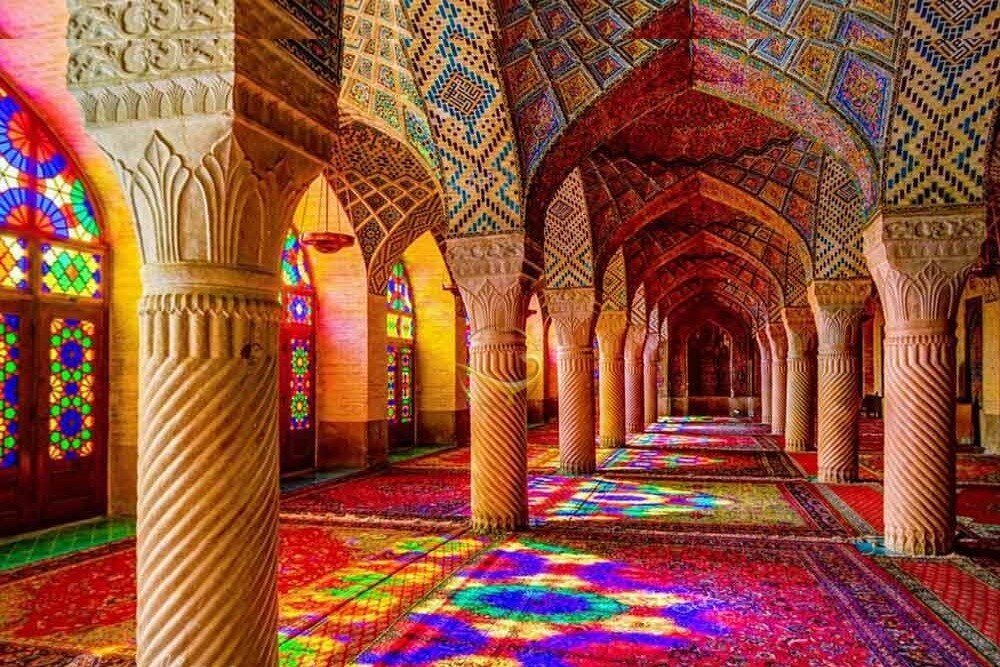50 Iranian mosques given national heritage status

TEHRAN – So far, more than 50 mosques across Iran have been registered on the national list for cultural heritage, the deputy tourism minister said.
“Over 50 mosques including the Jameh Mosque of Gazvin have been inscribed on the national list for cultural heritage,” Ali Darabi said on Thursday.
Darabi made the remarks during his visit to the ancient place of worship, mostly called Masjid-e-Jameh Atiq by the locals.
Also, the official reminded attendees of a minstrel plan to develop a dossier dedicated to historical mosques for possible registration on the UNESCO World Heritage list. “This dossier embraces 24 mosques from 15 provinces and it includes the Jameh Mosque of Qazvin as well,” he stated.
Iran, a country steeped in history and rich cultural heritage, boasts a remarkable array of awe-inspiring mosques. These architectural marvels stand as a testament to the country's religious devotion, architectural ingenuity, and artistic prowess. From ancient grandeur to contemporary elegance, Iranian mosques embody centuries of history, artistry, and spiritual significance.
Historical significance
Many mosques of the ancient land bear tales of historical and cultural evolution that occurred after the advent of Islam. They reflect various architectural styles influenced by diverse dynasties, including the Seljuks, Safavids, and Qajars. Each mosque holds a unique historical significance, having witnessed the passage of time and the evolution of Islamic art and architecture.
Architectural marvels
The architectural diversity of Iranian mosques is a charm to behold. The intricate designs, domes, minarets, and courtyards showcase exquisite craftsmanship. The geometric patterns, calligraphy, and intricate tilework on mosque walls and ceilings mesmerize visitors, reflecting the meticulous skills of artisans. The iconic domes and minarets are symbolic of Islamic architecture, offering breathtaking vistas against the Iranian skyline.
Decorative splendor
The interior decor of Iranian mosques is a visual feast. The lavish use of colorful tiles, fine stucco, mirrorwork, ornate muqarnas, and breathtaking mihrabs exemplify the artistry of Persian craftsmen. The interplay of light and shadow through stained glass windows creates a serene ambiance, enhancing the spiritual experience for worshippers and visitors alike.
Tourism appeal
Apart from their original religious purposes, mosques serve as cultural landmarks and popular tourist attractions. Visitors flock to marvel at the grandeur of mosques like the Imam Mosque in Isfahan, known for its stunning blue-tiled mosaics, or the Nasir al-Mulk Mosque in Shiraz, famed for its kaleidoscope of colors and intricate stained-glass windows. These mosques offer an immersive experience of Iran's rich heritage, attracting tourists, historians, and architecture enthusiasts from around the globe.
Thus, mosques not only serve as places of worship but also as cultural hubs, preserving the country's artistic legacy. Their historical significance, architectural brilliance, and decorative splendor make them an integral part of Iran's cultural tapestry, inviting travelers to delve into the country's vibrant past and experience its spiritual essence.
Visiting these architectural gems offers a glimpse into Iran's cultural diversity, artistic finesse, and religious devotion. As travelers step into these sanctuaries of tranquility and beauty, they embark on a journey through time, discovering the eternal allure and spiritual significance of Iranian mosques.
AFM
